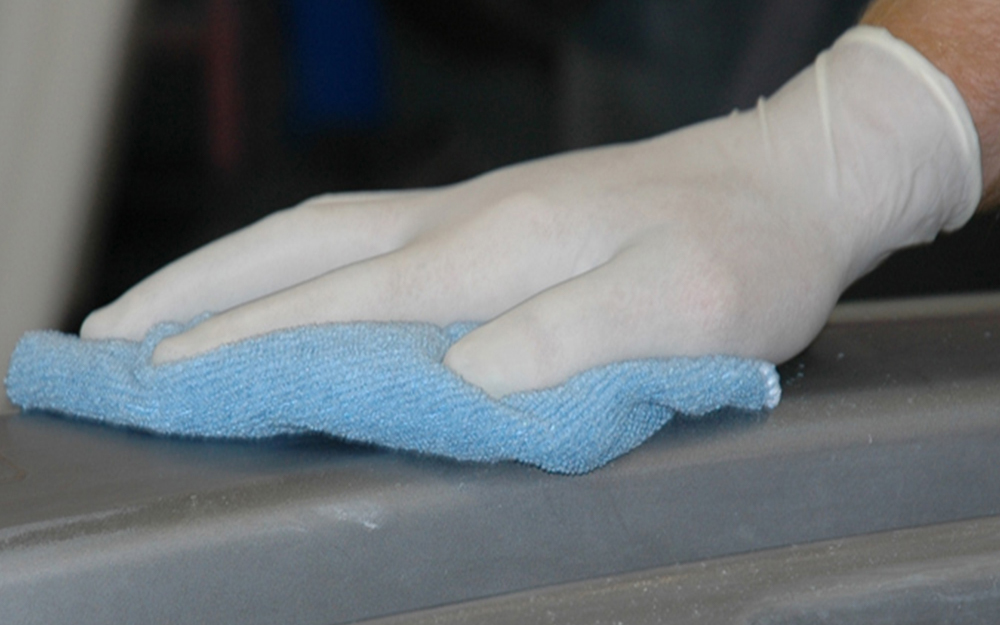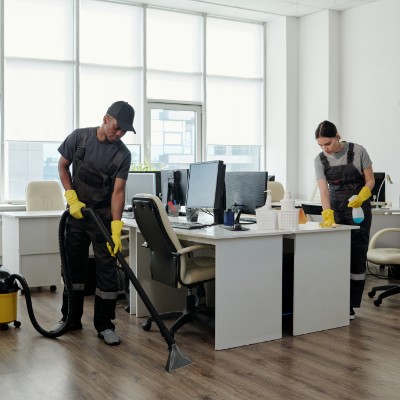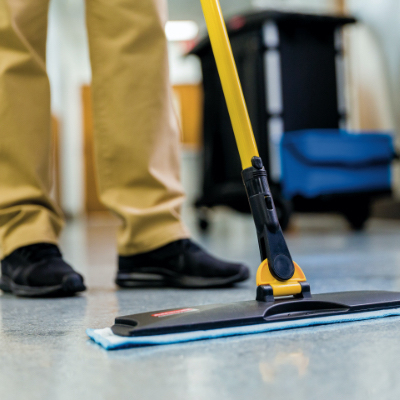Best Commercial Carpet Cleaning Equipment for Your Business

Published November 26, 2024
The right commercial carpet cleaning equipment can make a workspace healthier and more attractive while extending the life of the flooring. Commercial-grade machines allow you to clean your carpets quickly and effectively.
This guide explores the benefits of using commercial carpet cleaning equipment, the different types available and the best practices for effective cleaning.
Table of Contents
What are the Benefits of Commercial Carpet Cleaning Equipment?
Types of Equipment for Your Carpet Cleaning Business
Accessories for Professional Carpet Cleaning
Best Practices for Commercial Carpet Cleaning
How Should Industrial Carpet Cleaning Equipment be Serviced?
More Tools. More Products. More Perks.
What are the Benefits of Commercial Carpet Cleaning Equipment?

The right equipment for your carpet cleaning business can help you meet the demands of commercial or industrial workplaces, which are often large spaces that receive heavy use. Commercial carpet cleaning equipment offers numerous benefits:
- Efficiency: Commercial carpet cleaners are designed to cover large areas quickly and ensure thorough cleaning in minimal time. They are powerful enough to remove oils, greases and other chemicals.
- Improved appearance: Cleaners remove spots, stains and dry soils, making a workspace look its best and improve employee morale.
- Healthier environments: Carpets trap airborne pollutants and can cause the buildup of bacteria and allergens. Removing these through cleaning improves the air quality.
- Versatility: Adjustable carpet cleaners can handle low-pile or high-pile carpets of different materials.
Pro Tip: Equipment with low-flow options can clean carpets while using less water and appeal to environmentally conscious customers.
Types of Equipment for Your Carpet Cleaning Business

Different types of industrial carpet cleaning tools are necessary to serve customers at the commercial level.
- Vacuum cleaners are often useful for preliminary steps before deep cleaning. Vacuums with rotating bristles are best for lifting embedded dirt.
- Truck-mounted cleaners are built for large-scale cleaning jobs. Featuring high-pressure water extraction capabilities, they effectively remove dirt, stains and allergens from carpets.
- Portable carpet cleaners are easy to transport and maneuver, making them suitable for smaller spaces, spot cleaning and reaching challenging areas like corners or stairs.
- Foam encapsulated carpet cleaners use special solutions that capture dirt and stains in microscopic crystals, which are then vacuumed away. This method offers quick drying times and is ideal for sensitive carpets but is less effective on carpets that are heavily soiled.
- Hot water extraction machines (also called “steam cleaners”) combine hot water and cleaning solutions to penetrate deep into carpet fibers, removing embedded dirt, stains and allergens.
- Industrial fans dry carpets after cleaning.
Pro Tip: Choose riding or walk-behind carpet cleaners based on the size of the space.
Accessories for Professional Carpet Cleaning

Whether you’re dealing with different carpet textures or needing tools for spot cleaning, carpet cleaning accessories serve specialized functions.
- Carpet cleaning heads come in various sizes and types to accommodate different carpet textures.
- Spray triggers control the direction and intensity of the liquid and are useful in difficult locations.
- Hand tools such as brushes, wands and carpet rakes ensure effective spot cleaning and other detailed work.
- Hoses and cables are essential for connecting your equipment to power and water sources.
- Filters trap dirt, debris and bacteria, ensuring a clean and healthy environment. HEPA filters are certified for improving air quality by catching dust, pollen, mold and pet dander.
Best Practices for Commercial Carpet Cleaning

Take the following steps for the best results when cleaning your customers’ carpets.
- Pre-vacuum the carpets to remove loose dirt, debris and pet hair at the start of the cleaning process.
- Apply pre-treatment cleaning solutions such as foams, ready-to-use sprays or concentrates to break down tough stains and built-up dirt.
- Use the appropriate cleaning method based on the carpet material, level of soiling and manufacturer recommendations. For example, hot water extraction is the most effective on nylon or polyester carpet, two of the most common types in commercial use.
- Dry the carpets thoroughly to prevent mold and mildew growth. After cleaning, use fans, dehumidifiers or open windows to facilitate airflow and speed up drying. Avoid heavy foot traffic on wet carpets to prevent damage.
Pro Tip: Wear ear protection when using louder carpet cleaners, especially for long periods of time.
How Should Industrial Carpet Cleaning Equipment be Serviced?

Protect your industrial carpet cleaning equipment with the proper maintenance and servicing. Implementing a regular servicing routine will extend the lifespan of your equipment and maintain its optimal performance.
- After each use, empty and rinse the tanks and also flush the hoses and spray nozzles.
- Regularly inspect your equipment for signs of wear and tear, such as frayed cords or damaged components.
- Clean and replace filters as recommended by the manufacturer.
- Inspect hoses and attachments for cracks, leaks, or blockages. Repair or replace damaged items as needed.
- Lubricate moving parts to reduce friction for smooth operation.
Pro Tip: Using carpet cleaning equipment regularly can ensure better performance than equipment kept in storage for long periods.
More Tools. More Products. More Perks.

Be more competitive and boost your bottom line with Pro Xtra, The Home Depot’s loyalty program built for Pros. Sign up today to access the enhanced Pro Online Experience, built with the online business tools and time-saving features Pros need.
Use our tool and large equipment rental services for access to heavy-duty equipment for cleaning jobs.































